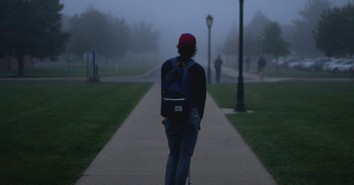Separation of Church and State?

The secularists now have their trophy win in Montgomery. The order handed down by Judge Myron Thomson of the Federal Dictrict Court has been carried out, and Alabama's famed Ten Commandments monument no longer sits in the rotunda of the state's Judicial Building. Chief Justice Roy Moore, who defied the federal court order, is now suspended and faces the likelihood of removal from office. Any way you look at it, the secularists won a big victory.
This is all the more remarkable given the public support for Judge Moore, the Ten Commandments, and the monument. The plain fact is that most Americans find any argument that such a monument is unconstitutional to be flatly wrong. A Cnn-USA Today-Gallup poll indicated that ony one in five Americans wanted the monument removed. [See USA Today coverage] Americans overwhelmingly support the monument and the public role of the Ten Commandments.
So, how did this happen? How could a coterie of liberal special interest groups force their agenda through the federal court? The answer to that question requires a serious look at ideas--and comes with a reminder that those ideas have consequences.
Public confusion and anger over the Ten Commandments ruling--and so many similar denials of religious speech or symbolism--is not lessened by reference to the First Amendment of the U. S. Constitution. When it comes to religion, the amendment simply states, "Congress shall make no law respecting an establishment of religion, or prohibiting the free exercise thereof ...." Nothing there about the Ten Commandments. In fact, there is no reference to a state's potential violation of the amendment by erecting a monument--and no reference to the states at all.
Something must explain the intellectual jump from the First Amendment to Judge Thompson's order. Looking back over the last two centuries and more, we can trace the victory of one powerful idea--the separation of church and state--and its transformation of the constitutional ideal.
In Separation of Church and State, University of Chicago law professor Philip Hamburger explains how the idea of strict separationism won its ascendency in the federal courts, and especially the U. S. Supreme Court. Hamburger's work, published just last year by Harvard University Press, is a massive project of intellectual and legal history. It should be required reading for anyone concerned about the erosion of our religious liberties.
The framers of the Constitution were concerned for the rights of religious dissenters and minorities, Hamburger explains, and the First Amendment's prohibition on a national church was intended to prevent those dissenters from being sidelined as national outsiders. The "free exercise" clause protected their right to the integrity of their own religious beliefs and practices.
Nevertheless, Hamburger recounts, some called for a more restrictive arrangement. The First Amendment does not even mention the separation of church and state. Who came up with this? As most Americans know, it was Thomas Jefferson, who in a now-famous 1802 letter to the Danbury Baptist Association of Virginia stated, "I contemplate with sovereign reverence the act of the whole American people which declared that their legislature should 'make no law respecting an establishment of religion, or prohibiting the free exercise thereof,' thus building a wall of separation between Church & State."
With one letter, Jefferson set the course for a reinterpretation of the First Amendment. His terminology of a wall of separation between church and state, once widely adopted, would become the catalyst for a legal and political revolution concerning the intersection of government and religion. Generations of judges came to understand their role to be the protectors of Jefferson's wall. The historical sequence that leads from Thomas Jefferson's letter to Judge Myron Thompson's order is clear and undeniable.
As Hamburger notes, "separation has historically gone much further in implying limits on government that did the liberty sought by dissenters and protected by the First Amendment."
Originally published August 29, 2003.







